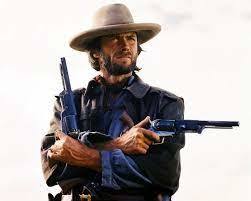The Hero in “A Man at Arms”
In our previous two posts, we examined several embryonic elements as they came together at the inception of an idea for a novel.
First, we said that we had the idea of using the historically-real letter from Paul the Apostle to the fledgling Christian community at Corinth as an “atomic bomb” of the ancient world, in the sense that its dissemination across the Roman empire could provoke insurrection and worse. That was Element #1 in the genesis of A Man at Arms.
 The model for our hero?
The model for our hero?Second, we identified this letter as what Alfred Hitchcock used to call “the McGuffin,” i.e. the item that the villain wants. In this case, the villain would be the Romans. Their aim, as the dominant military and political force in the ancient world, would be to stop this letter from reaching its destination—to destroy it and its courier.
So far so good.
We’ve got a Villain. We’ve got a World of the Story (Jerusalem and Judea in the first century CE). And we’ve got a McGuffin.
What’s next?
How about a hero? I happen to have a character—the solitary mercenary Telamon of Arcadia—that I’ve featured in three earlier books (Tides of War, The Virtues of War, and The Profession) and whom I’d love to bring back in a fourth.
Why not him?
What I love about Telamon (and what fascinates me as he evolves of his own volition on the page) is that he seems, on the surface, to be utterly amoral (he fights, he says, only for money) yet it’s clear from his conversation that he possesses a highly-evolved and passionately-held code of honor. Who exactly is this guy? He reminds me of Bogart in Casablanca or Clint Eastwood in The Outlaw Josey Wales. He could be a criminal or he could be a saint.
In other words, Telamon is the perfect antipodal element to conflict with and react to the divinely-inspired content of Paul’s letter.
Charity beareth all things, believeth all things, hopeth all things. endureth all things ….
For now we see through a glass darkly, but then face to face: now I know in part, but then shall I know even as I am known.
If conflict is the soul of drama, then inserting the hard-boiled Telamon into a tale whose central element is a document that will become, in historical reality, the book of the New Testament called 1 Corinthians, we as storytellers could have the makings of a cracking good tale.
To recap: in the evolution of this story (so far in its early, unformed stages), we don’t yet have a plot. We don’t have a theme. We don’t have a climax. We don’t have subsidiary characters. We don’t have any specific scenes.
But we do have a Hero, a Villain, a World and Time, and a McGuffin.
That ain’t bad.
The post The Hero in “A Man at Arms” first appeared on Steven Pressfield.


